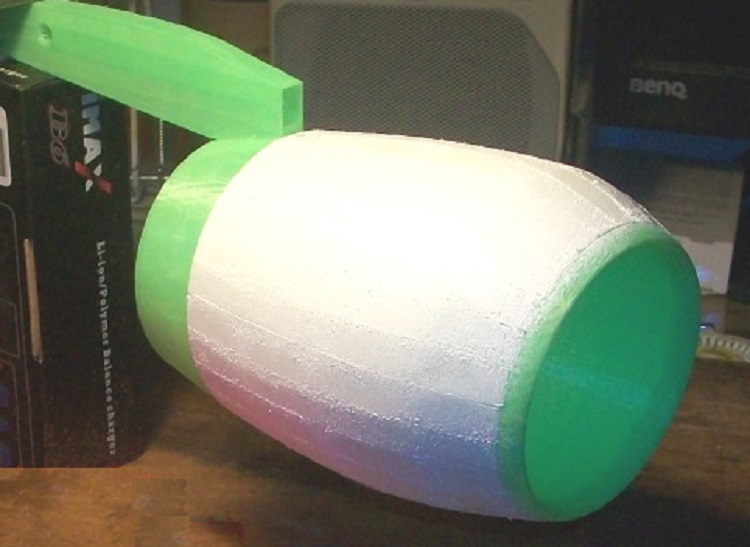quorneng
Master member
Earlier this year I came across this picture

It makes you realise just how big these modern turbofans really are.
This posed a question.
If you could build the air frame light enough could it use a ducted prop with a smaller motor rather than a same size multi blade fan with a bigger heavier motor along with its inevitable heavier batteries.
A quick scaling exercise showed an Airbus A350 with a scale nacelle gave a 5" internal duct diameter and would have a span of 60" (1540 mm).
Racing drone motors are small light and powerful (4s) and suitable 5x3.5 4 blade (CW and CCW) props are readily available.
So one of these

with a pair of these


and don't forget those fancy 'sharklet' wing tips!

Clearly it would not be blessed with an excess of thrust so it would have to be a 'simple' air frame (no undercarriage or flaps) and built super light but still strong enough to be flown outdoors - in calm conditions!
Clearly it would be sensible to build and test a nacelle before even considering building the rest of the plane.
Next question. Could the nacelle be 3D printed and would there be any advantage in doing so?
After much trial and error I ended up with this.

It s made up of 7 individual parts glued together. It weighs 27.2 g. The wing pylon is hollow to carry the motor wires into the wing.

And the outside of the nacelle is 'planked' in 2 mm Depron.

With the motor installed it gave just over 150g thrust but then it was only drawing 9A on a 4s.

I judged such a plane would fly well enough with a thrust of 50% of its weight so my target was a 600 g (21 oz) all up. With some 2 sqft of wing area it would have a wing loading of 10.5 oz/sqft, not exactly a 'floater' but still pretty light for a 'jet' and should be capable of a hand launch.
This could all so easily end up in tears!

It makes you realise just how big these modern turbofans really are.
This posed a question.
If you could build the air frame light enough could it use a ducted prop with a smaller motor rather than a same size multi blade fan with a bigger heavier motor along with its inevitable heavier batteries.
A quick scaling exercise showed an Airbus A350 with a scale nacelle gave a 5" internal duct diameter and would have a span of 60" (1540 mm).
Racing drone motors are small light and powerful (4s) and suitable 5x3.5 4 blade (CW and CCW) props are readily available.
So one of these

with a pair of these


and don't forget those fancy 'sharklet' wing tips!

Clearly it would not be blessed with an excess of thrust so it would have to be a 'simple' air frame (no undercarriage or flaps) and built super light but still strong enough to be flown outdoors - in calm conditions!
Clearly it would be sensible to build and test a nacelle before even considering building the rest of the plane.
Next question. Could the nacelle be 3D printed and would there be any advantage in doing so?
After much trial and error I ended up with this.

It s made up of 7 individual parts glued together. It weighs 27.2 g. The wing pylon is hollow to carry the motor wires into the wing.

And the outside of the nacelle is 'planked' in 2 mm Depron.

With the motor installed it gave just over 150g thrust but then it was only drawing 9A on a 4s.

I judged such a plane would fly well enough with a thrust of 50% of its weight so my target was a 600 g (21 oz) all up. With some 2 sqft of wing area it would have a wing loading of 10.5 oz/sqft, not exactly a 'floater' but still pretty light for a 'jet' and should be capable of a hand launch.
This could all so easily end up in tears!




















